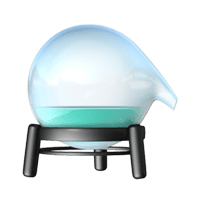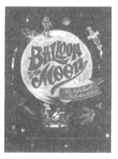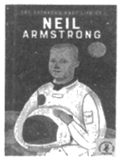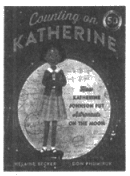本试卷共五道大题,39道小题,满分60分,考试时间90分钟。
知识运用(共14分)
一、单项填空(共6分,每小题0.5分)
从下面各题所给的A、B、C、D四个选项中,选择可以填入空白处的最佳选项。
1. —Dad, my computer doesn’t work. May I use ____________?
—Sure.
A. mine B. yours C. his D. hers
2. We often have a family meeting ____________ Monday evenings.
A. on B. of C. in D. at
3. I have to leave now, ____________ I will be late for the meeting.
A. for B. or C. but D. so
4. David, you ____________ take your umbrella. It is not raining.
A. needn’t B. can’t C. mustn’t D. may not
5. Your health is ____________ thing in your life.
A. important B. more important
C. most important D. the most important
6. —Alice, ____________ did you start to play the piano?
—At the age of five.
A. when B. why C. where D. how
7. If you don’t use your English, you ____________ it.
A. forget B. forgot C. will forget D. have forgotten
8. —Tom, hurry up! We ____________ for you.
—Just one minute.
A. wait B. waited C. are waiting D. have waited
9. Mr. Johnson met an old friend when he ____________ down the street.
A. walks B. is walking C. will walk D. was walking
10. Mike ____________ football since the fourth grade.
A. plays B. has played C. is playing D. will play
11. Patients ____________ good care of when they stay in hospital.
A. take B. took C. are taken D. were taken
12. —Can you tell me ____________ last summer vacation?
—Sure. I went to Shanghai.
A. where did you go B. where you went
C. where will you go D. where you will go
二、完形填空(共8分,每小题1分)
阅读下面的短文,掌握其大意,然后从短文后各题所给的A、B、C、D四个选项中,选择最佳选项。
Born to Draw
Jenna looked at the calendar and sighed (叹气). Even though she looked forward to the new term, she would miss spending her summer vacation __13__. It was so satisfying to see how her drawings could bring life to her storytelling!
Unfortunately, Jenna’s parents didn’t understand how much she wanted to be a comic illustrator (插画家). When she talked about her dream job with her parents, she expected them to 14____ her. Instead, they explained that drawing comics was a hobby, not a career (职业).
Jenna couldn’t stop thinking about that unpleasant conversation, so she turned to her elder brother, James. She wanted her brother to help her make their parents __15____ that drawing comics is an art form and that it can even be a great career.
But as she spoke, the look on her brother’s face told her that he agreed with their parents. Jenna politely listened to her brother and then she walked back to her room __16__.
At school a few weeks later, Miss Bridwell noticed that Jenna wasn’t herself. Jenna told Miss Bridwell that she was __17____ because her parents didn’t back her choice of becoming a comic illustrator.
Pointing to the bookshelf in the front of the room, Miss Bridwell began, “When I was probably about your age, my dad once said writing was not a career. I was just straightforward with my dad. I simply told him the truth. I explained that I enjoyed writing, and that I wanted to get better and to write. I guess my __18____ came through, and he believed me.”
Miss Bridwell’s story __19____ Jenna a lot, so she decided to discuss her ideas with her parents again. It didn’t happen immediately, but in the end, they came to understand that Jenna’s 20____ of drawing comics was more important than whether it was the career they wanted for Jenna.
13. A. drawing B. reading C. writing D. singing
14. A. comfort B. support C. teach D. follow
15. A. promise B. decide C. prove D. believe
16. A. secretly B. hopefully C. cheerfully D. quietly
17. A. regretful B. nervous C. upset D. frightened
18. A. honesty B. patience C. pride D. carefulness
19. A. reminded B. encouraged C. surprised D. interested
20. A. love B. experience C. purpose D. memory
阅读理解(共36分)
三、阅读下列短文,根据短文内容,从短文后各题所给的A、B、C、D四个选项中,选择最佳选项。(共26分,每小题2分)
A
Here are some books about space travel. Take a trip to the Moon and beyond with these encouraging reads.
Balloon to the Moon
Long before anyone had designed a rocket, the Montgolfier brothers were making hot air balloons. In October 1783, they became the first people to experience controlled flight. Balloon to the Moon starts there and leads to Neil Armstrong’s “small step” and beyond. Learn about all the progress of the space travel, then get ready for an unknown but exciting future. | The Extraordinary Life of Neil Armstrong
Neil Armstrong made history in 1 969 when he became the first person to set foot on the Moon. From his childhood playing with model planes to becoming one of the most famous astronauts of all time, discover the wonderful story of Neil Armstrong’s life in this book. It has lots of facts and pictures, and shows the key events in his life. |
To Space & Back
Sally Ride became the first American woman in space in 1983. In this book, Sally shares her personal experience of traveling into space. From discussing the experience of living and working in space to explaining how astronauts train and adapt (适应) to their new environment, she talks about her journey through space. | Counting on Katherine
This encouraging book tells the story of Katherine Johnson who has a gift for math. She helped make the historic Apollo 11 moon landing possible and made sure that Apollo 13 returned home safely when the mission (任务) was in danger. |
21. Who first experienced controlled flight in October 1783?
A. The Montgolfier brothers.
B. Katherine Johnson.
C. Neil Armstrong.
D. Sally Ride.
22. If a girl is interested in women astronauts’ lift in space, she will probably read ____________.
A. To Space & Back
B. Balloon to the Moon
C. Counting on Katherine
D. The Extraordinary Life of Neil Armstrong
23. What did Katherine Johnson do?
A. She designed the first rocket.
B. She recorded key events of space travel.
C. She explained how astronauts trained for space travel.
D. She helped make the Apollo 11 moon landing possible.
B
People can reduce, reuse, or recycle waste instead of throwing it away. Matt and Sam decided to do an experiment. They wanted to see exactly how much waste the three R’s could save.
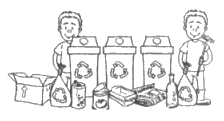
First, they collected the rubbish from six classrooms at their school. They divided the rubbish into three groups:
· things that were reusable, such as a pencil or a marker that had been thrown away
· things that could be recycled, such as cans, glass, or paper
· things that were truly waste
Then, Matt and Sam weighed each of the three groups. They learned that 84% of the total rubbish thrown away that day could be recycled or reused. They decided to do something about it.
Matt and Sam presented the idea of starting a recycling programme to the school leaders. Then they worked with the Student Council. They prepared brochures (手册) to send home to tell the students and their families about recycling. They stated in the brochure that recycling helps to keep our planet healthy. The school bought colored containers (容器) for each classroom. Each room received a blue container for paper and a green container for glass and cans. They also received a red container for real rubbish.
Within a short time, each classroom in the school was sorting recyclable materials from rubbish before it was thrown. Matt and Sam decided to weigh the rubbish one more time. They wanted to check the school’s progress. They collected the rubbish from the red containers from the same six classrooms as before. They sorted the rubbish into three groups again and weighed each group. This time, they were pleased to find that the red containers were filled with 90% waste that should be thrown away. Only 10% of recyclable materials had been thrown into the red containers. Matt and Sam were pleased with their school’s effort at reducing waste on our planet.
24. By doing an experiment, Matt and Sam wanted to find out ____________.
A. what things could be reused
B. what recyclable materials could be saved
C. how much waste the three R’s could save
D. how much waste their school produced a day
25. What did Matt and Sam do in the recycling programme?
A. They made a speech on recycling.
B. They wrote a report to the school leaders.
C. They bought colored containers for each classroom.
D. They helped students and their families know about recycling.
26. Which word can best describe Matt and Sam?
A. Responsible. B. Friendly. C. Independent. D. Confident.
C
We see logos on signs, buildings, television, and even on the clothes we wear. Logos are used to stand for brands (品牌). There are logos such as the Nike “swoosh”, the Apple logo and the colorful rings of the Olympic Games. All of these logos are designed to attract our attention. They also help us remember a product or service connected to the logo. However, research performed at the University of California, Los Angeles finds that remembering the details of logos is very difficult. The researchers try to explain this.

Logos are typically designed to be simple and easy to recognize. Yet the frequent exposure (频繁接触) to these logos can actually make our brains overlook the details of logos. It would be challenging to try to remember every single thing that crosses our path. We take in so much information every day that the brain works to notice information that does not need to be stored. It allows the unimportant information to disappear gradually from our memory.
The details of product logos are just the kind of information our brains tell us we do not need. This may be discouraging to logo designers and to companies that use these eye-catching logos. But there are still many business experts who believe in the importance of a recognizable logo.
Even though the brain is likely to pay no attention to unnecessary details, it is also programmed for recognition. When we see logos over and over again, we become familiar (熟悉) with them. This repeated exposure leads our brains to remember the basic idea without all of the details. This general sense of memory has its own benefits. It can make us feel like we really know the product behind the logo. In fact, familiarity with a logo can even make people feel more comfortable about buying or using certain products.
Logos are everywhere we look today. Those people who create logos need to know that people will only remember what they believe is important. A clever design may be interesting, but most people will forget the details.
27. In the first paragraph, the writer mainly ____________.
A. introduces some famous brands
B. describes the design of some logos
C. shows the popularity of famous brands
D. explains the purpose of designing logos
28. The word “overlook” in Paragraph 2 probably means “____________”.
A. try to remember B. see the importance of
C. take no notice of D. fail to understand
29. What can we learn from the passage?
A. Business experts think the details of logos are unnecessary.
B. Our brains can choose which logos to notice and remember.
C. The repeated exposure to a logo can lead people to buy the product.
D. People know more about the products behind logos with more details.
30. Which of the following would be the best title for the passage?
A. What Makes a Good Logo?
B. What Can We See in a Logo?
C. Why Is a Good Logo Important?
D. Why Should Logos Be Recognizable?
D
The students are quieting down in their seats. The teacher begins to give lessons. Then she asks a question for the class to answer, and the students all react in separate ways.
Each student is special with different strengths and weaknesses. Because of this fact, different students learn differently. While some may learn by quickly answering the teacher’s question, speaking up with ease and comfort, others may learn just as well by listening to their classmates and teacher speak. These students should not be punished for learning the way they do, but when teachers grade class participation (参与), that is exactly what they are doing.
According to a survey carried out by Bonnie M. Miller, a professor at University of Massachusetts Boston, 60% of her students believe that grading participation does not encourage them to participate more in class. They feel more comfortable expressing their thoughts if they know what they say will not be given a number later on.
Some other students believe that when class participation is graded, teachers are awarding outgoing students while punishing shy ones. Grading class participation sends the message that shy students are not good students. It makes them feel like they should be outgoing, loud, and able to learn by talking, which makes them feel uncomfortable.
In my experience with classes where class participation was graded, I felt difficult to do well. For example, instead of being able to fully focus on what my teacher and classmates said, my mind would race with the things that I could possibly share in the class discussion. Either I would be too slow in raising my hand, or feel too nervous to lift it at all. Imagining my falling grades, wishing that I could somehow be a more outgoing person, suddenly my thoughts would be interrupted by the sound of my classmates getting up to leave, and I would realize that I learned nearly nothing that class.
What’s more, by focusing on the students who talk the most in class, teachers fail to award students who may be good listeners—a skill that is as important as being able to talk in front of a group of people.
Teachers can increase class participation by providing different ways of grading participation that are acceptable to different personalities and learning ways. For example, they can give students opportunities to write their ideas. Most importantly, teachers should create classrooms where students want to learn.
31. According to the passage, in a class where participation is graded, ____________.
A. most students are likely to act actively
B. some students feel stressed to be who they are
C. students are forced to listen to their classmates
D. students are encouraged to learn the way they prefer
32. The writer talks about his own experience in Paragraph 5 to explain ____________.
A. why students care much about grades
B. why listening is as important as speaking up
C. how grading participation influences learning process
D. how students feel when preparing for speaking up in class
33. What’s the writer’s main purpose in writing the passage?
A. To remind teachers of the importance of grading properly in class.
B. To tell students the effect their personalities have on learning.
C. To encourage teachers to keep students active in class.
D. To provide students with ways to participate in class.
四、阅读短文,根据短文内容回答问题。(共10分,每小题2分)
Keep Calm and Carry On
Stuart Manley and his wife, Mary, run a second-hand bookshop called Barter Books in Alnwick, Northumberland. In 2000, they bought a box of old books. When Stuart got them back to the shop, he discovered a poster at the bottom of the box. The poster read “Keep Calm and Carry On”. Neither Stuart nor Mary knew anything about the history of the poster, but they liked it so much that they decided to hang the poster in their bookshop.
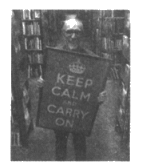
At the start of World War Ⅱ, the British government designed three posters and the Keep Calm poster was one of them. Two of the three posters were released(展示) in public in order to encourage the British people. Although nearly 2.5 million copies of the Keep Calm poster had been printed, the British government decided not to release them. In 1940, most of the copies were recycled into other paper products. Only a few were left.
The poster started its second life when Manley’s poster began attracting the attention of customers in his shop. He printed copies of the poster to sell. Soon other companies began to sell products with the slogan (标语). It appeared on everything from mugs to shopping bags.
The reasons for the popularity of this rediscovered poster aren’t hard to understand. Shortly after the poster made its appearance in 2000, a worldwide economic (经济的) downturn began. People were in need of something to raise their spirits. The saying “Keep Calm and Carry On” seems to be the perfect slogan to bring courage and hope to people. Besides the encouraging message, the simple design of the poster helped lead to its popularity.
Today the now-famous wartime slogan has been rewritten in many fun ways. Some people have created phrases like “Keep Calm and Dance On”, “Keep Calm and Call Mom” or “Keep Calm and Eat a Cupcake”. The slogan has become part of popular culture. The explanations of the slogan are often lighthearted, but it is important to remember its purpose when it was first designed.
34. Where did Stuart discover the poster?
35. Did Stuart know anything about the history of the poster when it was discovered’?
36. When was the poster first designed?
37. Why did the poster become popular?
38. Please rewrite the Keep Calm slogan to encourage your classmates before an important exam.
书面表达(共10分)
五、文段表达(10分)
39. 从下面两个题目中任选一题,根据中文和英文提示,完成一篇不少于50词的文段写作。文中已给出内容不计入总词数。所给提示词语仅供选用。请不要写出你的校名和姓名。
题目①
假如你是李华,你们学校号召各班制作短视频展现同学们延期开学后的校园生活,并发布在学校网站上。你所在的小组负责制作你班的短视频。请你写一封邮件给你班交换生Peter,说明你们制作短视频的想法或构思,并告诉他所需准备的素材以及发送给你的时间。
提示词语:show, beautiful, safe, interview, photo
提示问题:·What’s your idea for making the video?
· What would you like Peter to prepare?
· When should Peter send you the material?
Dear Peter, We are going to make a video showing our school life after the reopening of our school. _______________________________________________________________________________ _______________________________________________________________________________ If there is anything more you want to know, please tell me. Yours, Li Hua |
题目②
“经历有好也有坏,每种经历都是收获。”由于防控疫情的需要,学校延期开学,同学们经历了一段特殊的学习生活。
某英文网站正在开展以”我的居家学习生活”为主题的征文活动。假如你是李华,请用英文写一篇短文投稿,谈谈你的居家学习生活以及你的收获。
提示词语:study, do exercise, housework, self-disciplined (自律的)
提示问题:·What did you do when you stayed at home?
·What have you learned from this special experience?
_______________________________________________________________________________ _______________________________________________________________________________ |
【试题答案】
知识运用(共14分)
一、单项填空(共6分,每小题0.5分)
1. B 2. A 3. B 4. A
5. D 6. A 7. C 8. C
9. D 10. B 11. C 12. B
二、完形填空(共8分,每小题1分)
13. A 14. B 15. D 16. D
17. C 18. A 19. B 20. A
阅读理解(共36分)
三、阅读短文,选择最佳选项。(共26分,每小题2分)
21. A 22. A 23. D 24. C 25. D
26. A 27. D 28. C 29. C 30. B
31. B 32. C 33. A
四、阅读短文,回答问题。(共10分,每小题2分)
34. At the bottom of a box of old books.
35. No, he didn’t.
36. At the start of World War Ⅱ.
37. Because of its encouraging message and its simple design.
38. Students’ own answers.
书面表达(共10分)
五、文段表达(10分)
39. 参考范文:
题目①
Dear Peter,
We are going to make a video showing our school life after the reopening of our school. For the first part of the video, I’d like to show some pictures of our beautiful school. And then I want to show what the school does to make sure we can keep safe at school. We can also interview some students and teachers. Would you please take some photos of our school or short videos showing our school life? You can email them to me by next Monday.
If there is anything more you want to know, please tell me.
Yours,
Li Hua
题目②
When I stayed at home, I tried my best to manage my time wisely. I spent most of my time studying. To keep healthy, I spared some time to do some exercise every day. Besides, I helped do some housework.
I learned to be more self-disciplined during these days. It was not easy, but I made it. I also learned that we should do something meaningful to encourage ourselves when facing difficulties.
文段表达评分标准:
第一档:(9—10分)
完全符合题目要求,观点正确,要点齐全。句式多样,词汇丰富。语言准确,语意连贯,表达清楚,具有逻辑性。
第二档:(6—8分)
基本符合题目要求,观点正确,要点齐全。语法结构和词汇基本满足文章需要。语言基本通顺,语意基本连贯,表达基本清楚。虽然有少量语言错误,但不影响整体理解。
第三档:(3—5分)
部分内容符合题目要求,要点不齐全。语法结构和词汇错误较多,语言不通顺,表达不够清楚,影响整体理解。
第四档:(0—2分)
与题目有关内容不多,只是简单拼凑词语,所写内容难以理解。
